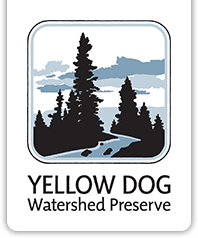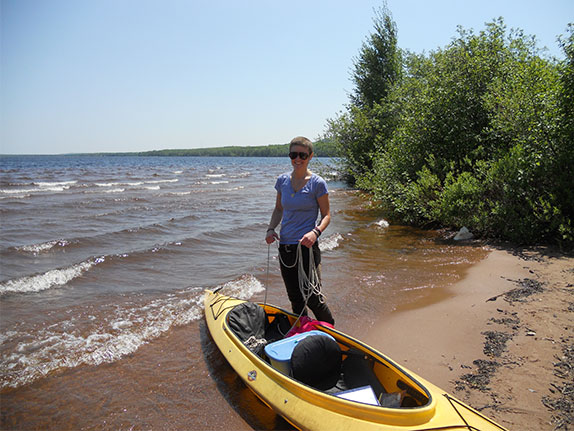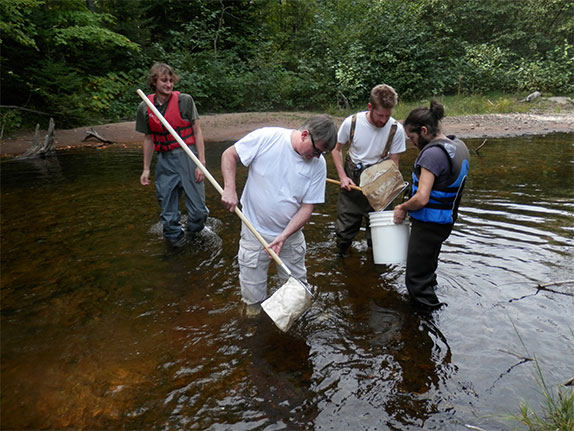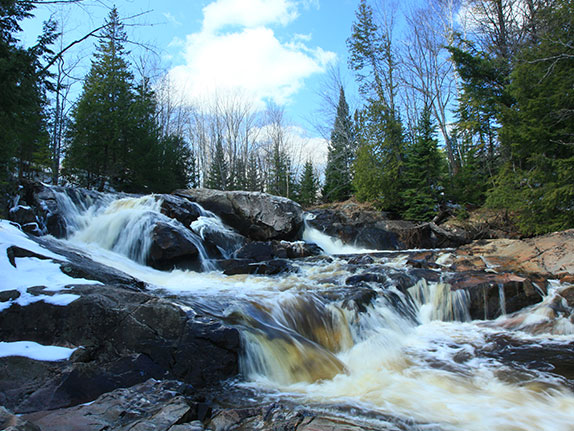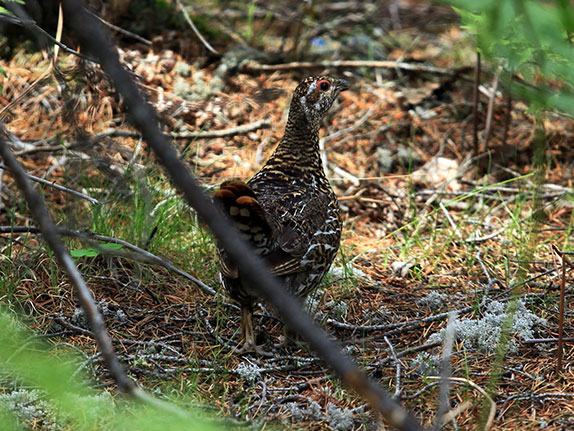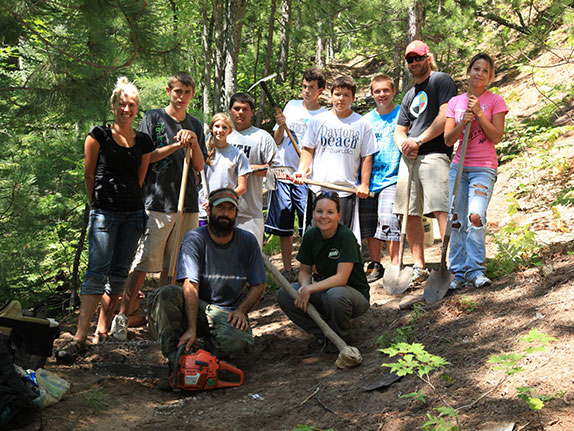
Watershed
Fauna
There are many mammal, reptile, and fish species that dwell in the northwoods. Our watersheds are home to the typical gamut of white tailed deer, coyote, fox, rabbit, and other common fauna. More notable animal species include the grey wolf and the moose.
The grey wolf was nearly exterminated from the Upper Peninsula by the 1950’s. After the federal listing of the animal on the endangered species list in the 1970’s, a slow trickle of individuals eventually made their way back to the U.P. 1991 was the first year that a pair had mated and produced pups in Michigan since the wolf’s decline. During the 2004 census, 361 individual wolves inhabited the Upper Peninsula. Confirmed wolf packs in Marquette County, include: Echo Lake, Ford Road, and Huron Mountain Club. Each pack generally stays within a 100 square mile territory and does not overlap. YDWP staff have documented wolf evidence including scat, tracks, and calls. The grey wolf has more recently been taken off of the federal and state endangered species list and is managed by the MDNR. The grey wolf is now considered a game species in 2013 and designated hunting areas have been developed to manage wolf populations in these specific areas. There are less than 700 wolves left in Michigan and numbers continue to decline.
As with the wolf, moose were once found throughout the U.P. until the era of logging and mining came to its climax. By the early 1900’s, moose sighthings had dwindled to almost nothing. A reintroduction was tried in the 1940’s but failed to repopulate the area. In 1989, another attempt was more successful. MDNR transported Canadian moose to northwest Marquette County. Biologists have determined that the original number transplanted has grown but they do not know to what extent. Modeling and surveys have produced results that differ and the MDNR did not achieve the 1000 moose by the year 2000. That is not to say a moose sighting is uncommon. YDWP staff have encountered several moose throughout both the Yellow Dog and Salmon-Trout watersheds. Tracks are frequently found at the NAWCA property and the Jean Farwell Wilderness.
Although no coaster brook trout have been found in the Yellow Dog River, the adjacent watershed for the Salmon Trout River has yielded results that prove the fish to not only reside but to spawn in this river system. The spawning areas are so limited for the coasters that this river is known as the only area on the south shore of Lake Superior where they naturally reproduce. Other rivers provide spawning opportunities with assistance from the MDNR. Some issues have come unto fire such as if the coaster is actually a separate species or not. Research has been conducted to make this determination, and it was decided that the coaster brook trout is so close to the standard brook trout that it is not considered a separate species. Although, the coaster does have different behaviors and appearance than river brook trout.
Recent Posts
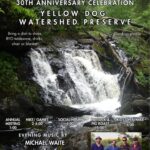
30th Anniversary Celebration
26 Jun, 25
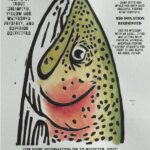
2025 Fly-fishing Workshop on the Yellow Dog
11 Jun, 25
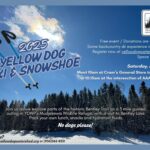
2025 Bentley Trail Ski & Snowshoe Event
07 Feb, 25

2024 Annual Meeting and Hike, 10/26
07 Oct, 24

